The Gigabyte UD1000GM PG5 1000W PSU Review: Prelude to ATX 3.0
by E. Fylladitakis on June 23, 2022 8:00 AM EST- Posted in
- Cases/Cooling/PSUs
- PSUs
- Gigabyte
- 1000W
- 80Plus Gold
- ATX v3.0
- 12VHPWR
Hot Test Results (~45°C Ambient)
Despite its lengthy warranty, the components of the UD1000GM PG5 left us unimpressed and our testing verified our initial assumptions. The PSU suffers when it has to operate inside a very hot environment, with the efficiency taking a brutal drop at high loads. The average efficiency reduction of 1% across the nominal load range does not seem that high but the efficiency drop is very high when the load is greater than 800 Watts, suggesting severe thermal stress.
Despite the very high ambient temperature, the fan of the GIGABYTE UD1000GM PG5 failed to start right away with the unit operating inside our hotbox. This resulted to worryingly high temperature readings at low loads. Once the fan started, the temperature dropped significantly, rising little by little as the load increased. The temperature does reach high figures again once the unit is heavily loaded but always stays within operating levels.
Even though it does not start right away, as expected, the 120 mm fan is giving its all to keep the GIGABYTE UD1000GM PG5 cool enough under these adverse operating conditions. The very moment is starts, the fan will be audible to the user, rapidly increasing in speed as the load increases. It reaches its maximum speed when the load is just a little higher than 50% of the unit’s capacity, valiantly trying to keep the PSU reliable and operational. The noise figures are above 50 dB(A), a figure that will annoy even the most tolerant of people if they are not wearing headphones – or ear protection.


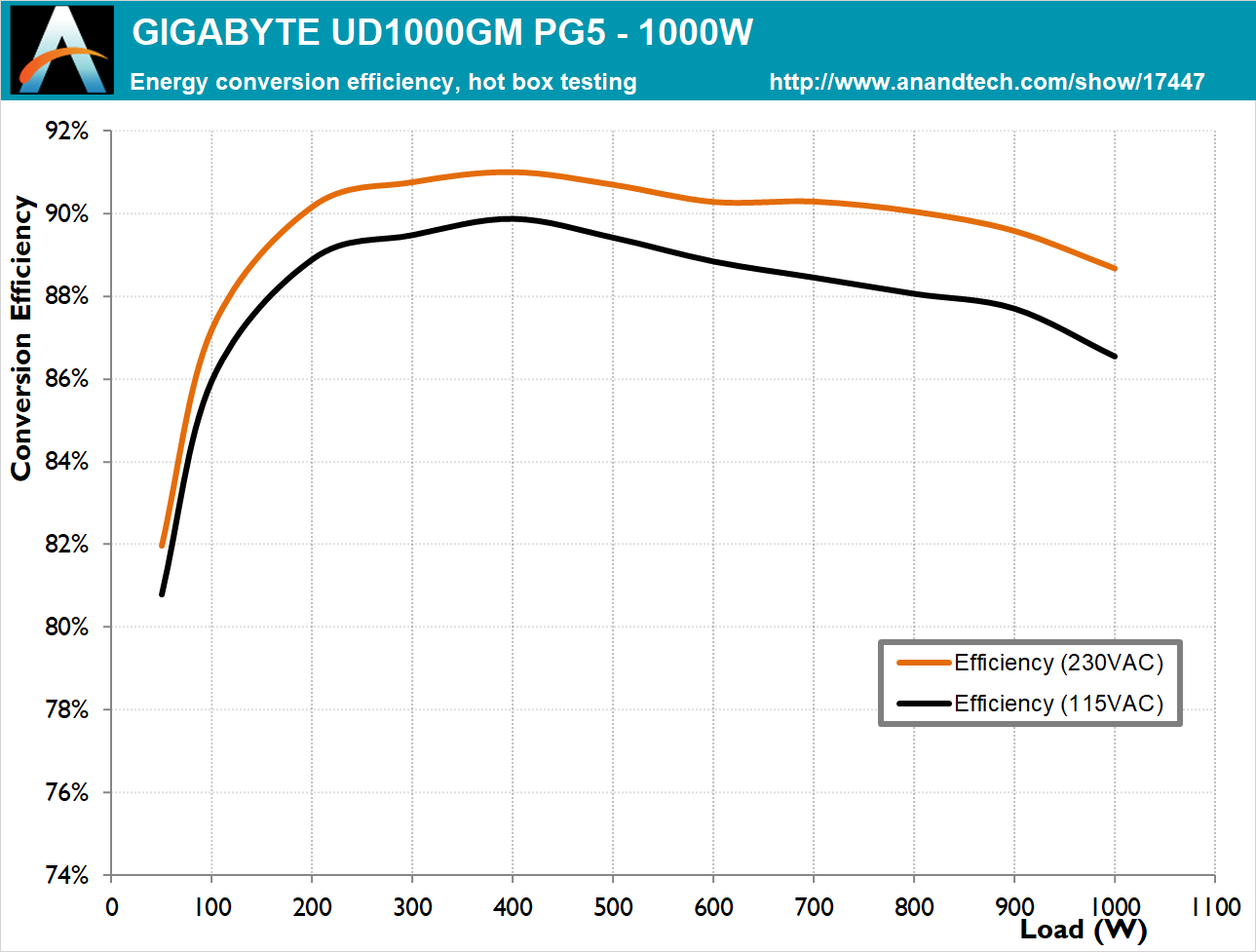
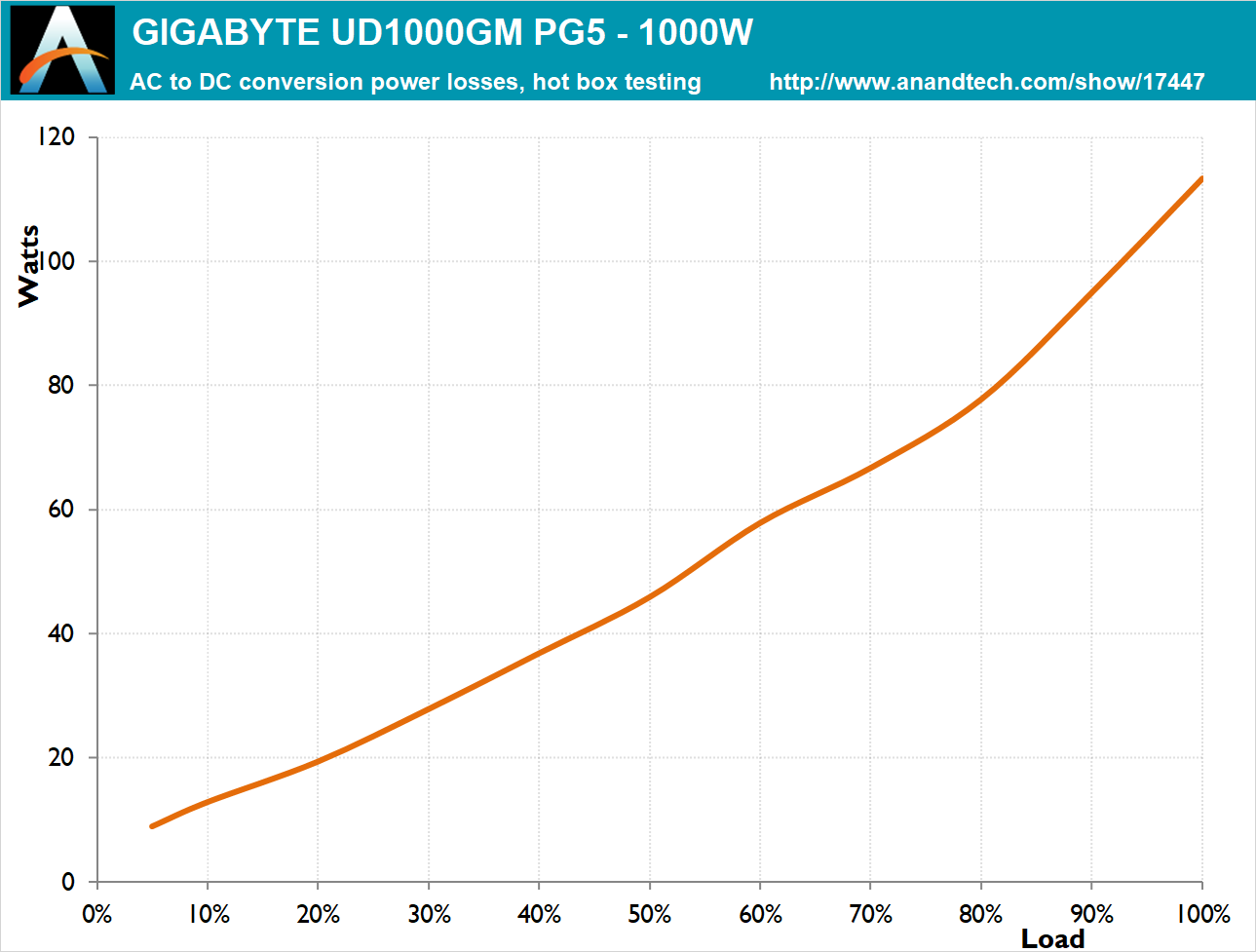
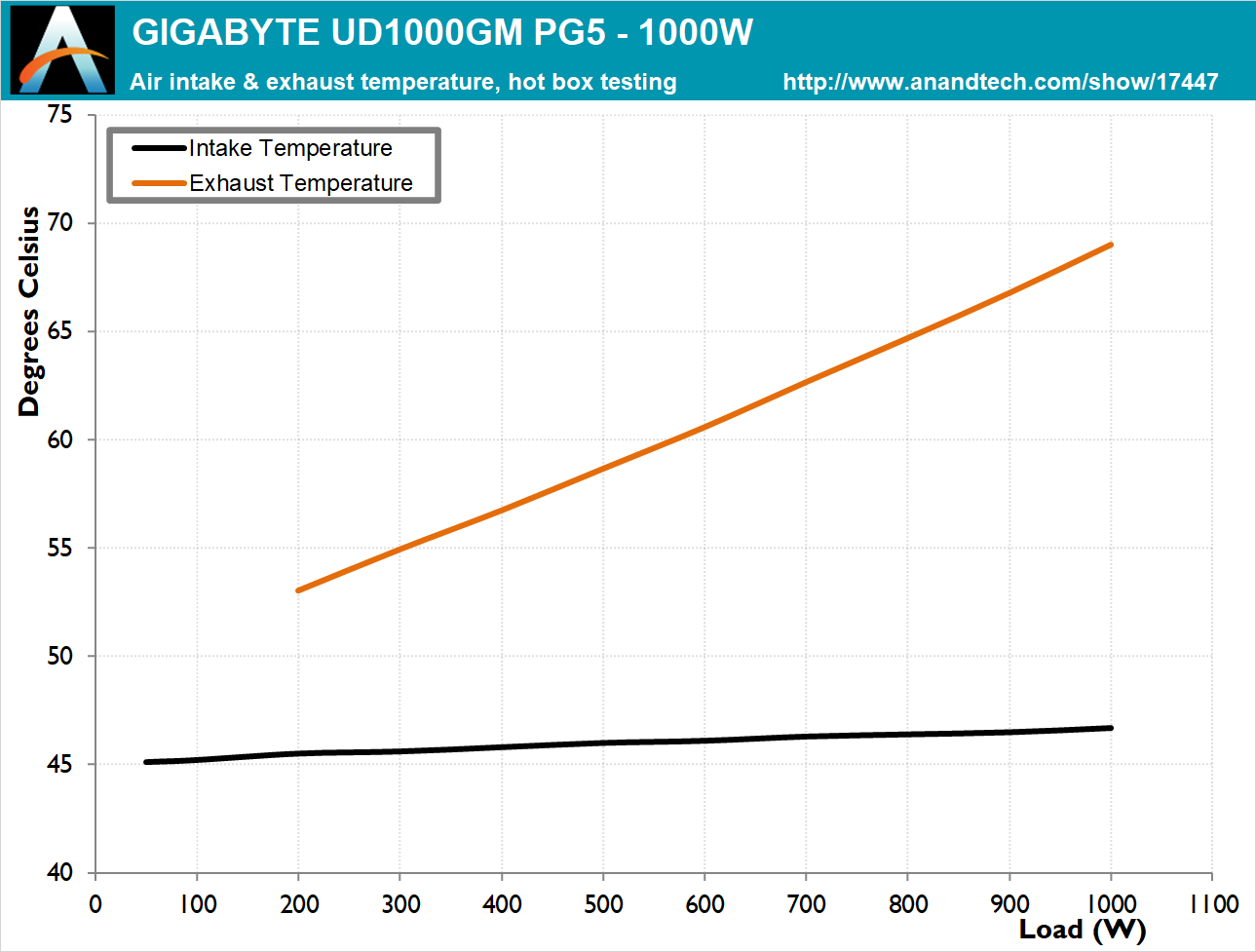
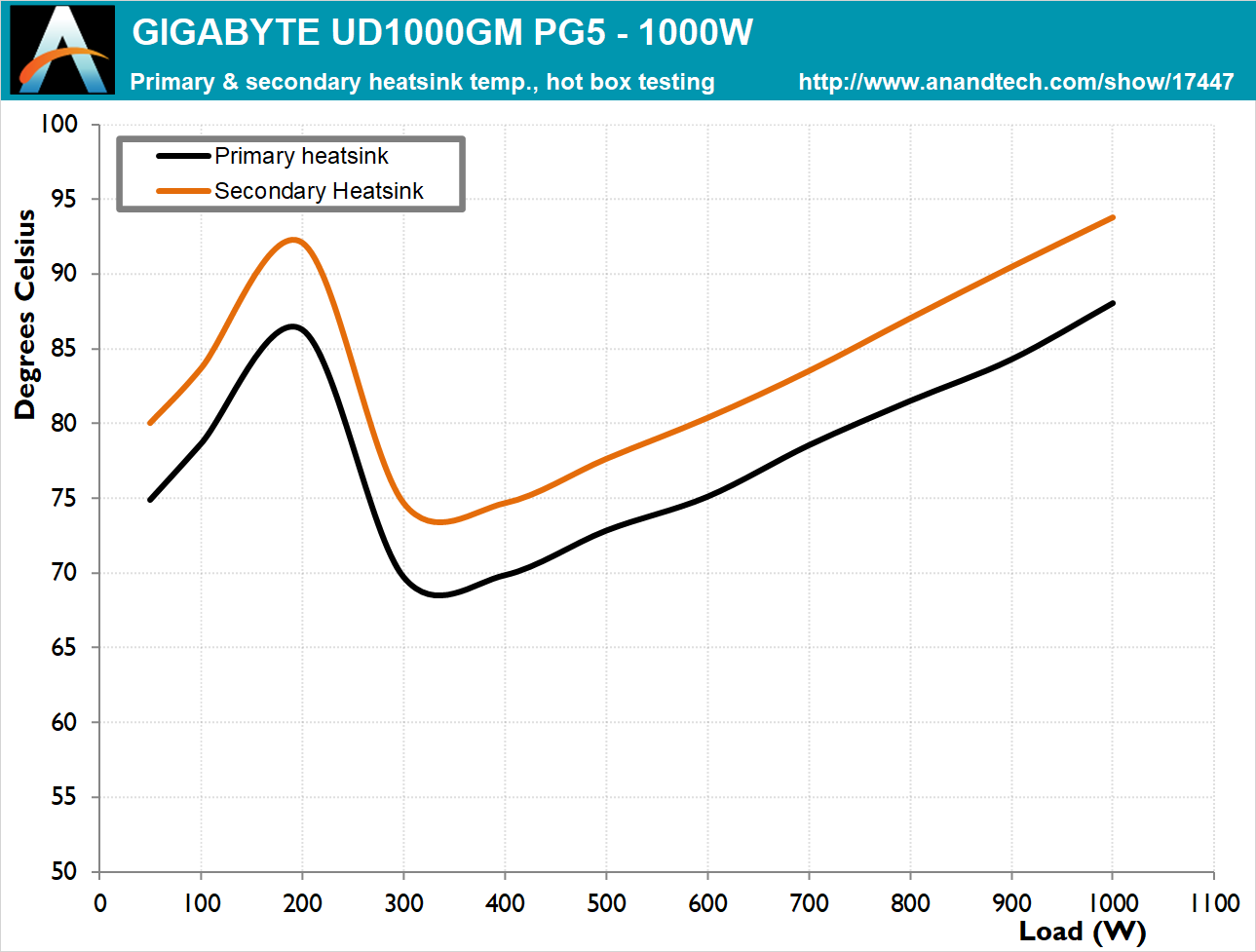
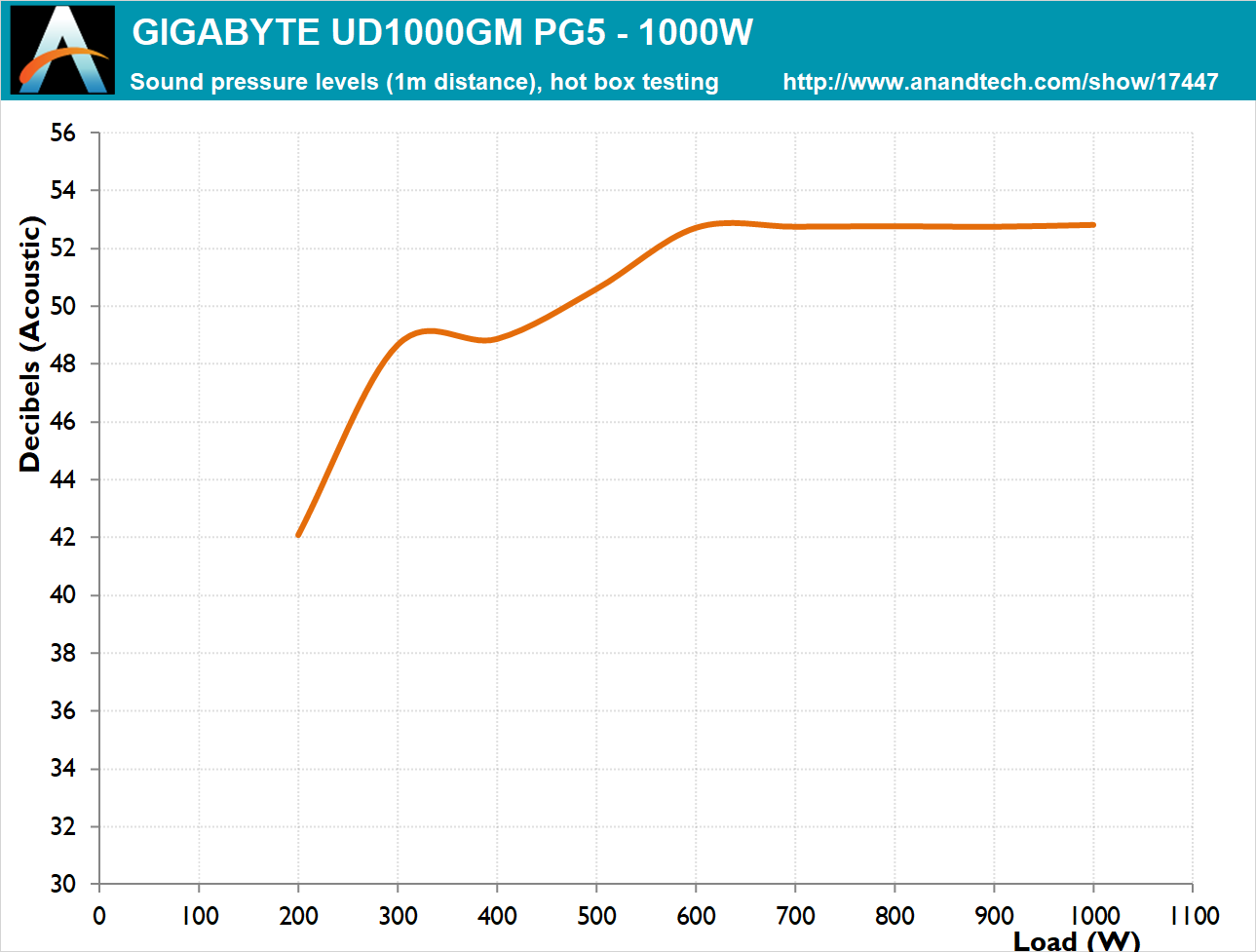








49 Comments
View All Comments
StevoLincolnite - Thursday, June 23, 2022 - link
Yeah, not much comment from Anandtech, they used to be the leaders in this field... But it seems more convenient and easier to just get information from a select few Youtube channels than this site now.DigitalFreak - Friday, June 24, 2022 - link
AT hasn't done this in years. The last thing I remember them doing like that was exposing SSD vendors (OCZ?) for switching to lower performing parts while not updating the model number.GN is the go-to site for this stuff now.
LordSojar - Saturday, June 25, 2022 - link
You might enjoy this, then.https://cultists.network/140/psu-tier-list/
29a - Thursday, June 23, 2022 - link
How about not going so heavy on the acronyms. It really helps to write the whole thing out the first time you use it.mode_13h - Thursday, June 23, 2022 - link
You mean like APFC and MOSFET? I feel you, but then again even writing them out wouldn't help without a proper explanation, which could turn into quite a digression. At that point, people are really just better off looking up those terms themselves, so they can get the appropriate level of understanding they seek.DanNeely - Friday, June 24, 2022 - link
If written, such definitions should be put in a boilerplate "how we test" page that gets included with each article. Available for anyone new, but not a bother for the rest of us since we can just skip over it.mode_13h - Friday, June 24, 2022 - link
Yeah, I've seen Toms Hardware have explainer articles, which are then linked from the relevant reviews. That would be a way to provide background, without cluttering up the actual review.Because, at some point in time, everyone needed/needs to learn what PFC is and why it matters. Plus, it's a cheap way to get another article & more page views.
meacupla - Friday, June 24, 2022 - link
If you don't know the acronym, you might as well look it up.If you've never heard of the acronym in the first place, there is a high chance that you wouldn't understand what it does, just from the string of words the acronym is made from.
This applies to most electronic/computer acronyms.
Khanan - Thursday, June 23, 2022 - link
Aside from the loud fan it seems to be good enough.Techie2 - Thursday, June 23, 2022 - link
I used a lot of Gigabyte Durable mobos over the years with excellent success. When they failed to upgrade their VRM design to handle AMD's 8-core CPUs and the VRM would overheat and throttle the CPU frequency/performance I notified Gigabyte constantly for almost a year. They proceeded to tell me I was wrong even though reports started showing up in mobo forums all over the net confirming the problem with the heavy power required for the 8-core AMD CPUs. So I discontinued using Gigabyte mobos since I could not rely on them to be reliable and properly engineered for the application. Some two years later they finally upgraded the VRMs for the defective mobos but they never replaced or recalled the defective ones they sold.From this review it looks like this is another "price point" product as sold by any number of PSU purveyors instead of a true premium quality, long-life design that most folks building high end PC systems would desire. I'll pass on this and the many cookie cutter products dumped into the marketplace by companies looking to boost their profits by sticking their name on a mediocre product that they don't even produce. There is a lot of badge engineering for profit these days.